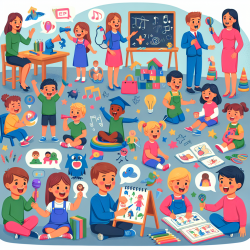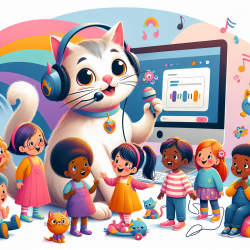As practitioners dedicated to enhancing the communication abilities of children with cerebral palsy (CP), we continuously seek evidence-based approaches that can lead to significant improvements. The recent study, "Report on the Impact of LSVT LOUD in Improving Communication of a Preschool Child and a Young Adult With Cerebral Palsy," published in the Canadian Journal of Speech-Language Pathology and Audiology (CJSLPA), provides compelling evidence supporting the efficacy of the Lee Silverman Voice Treatment (LSVT LOUD) protocol. This blog explores the study's findings and how practitioners can implement these outcomes to improve their clinical practice.
Understanding the Research
The study focused on two individuals with CP: a preschooler and a young adult. Both clients underwent 16 individual 1-hour-long LSVT LOUD therapy sessions, four times per week over four weeks. The treatment's impact was assessed using standard acoustic measures and perceptual ratings from caregivers and teachers.
Key Findings
- Significant increases in average vocal intensity during sustained vowel phonations for both clients.
- Improved average vocal intensity during sentence repetitions for the preschooler.
- Maintenance of vocal intensity gains for the young adult at 3 and 20 months post-treatment.
- Increased maximum duration of sustained vowel phonation for the preschooler.
- Perceptual ratings indicated improvements in communicative effectiveness, participation, and speech for both clients.
Implementing LSVT LOUD in Clinical Practice
The study's outcomes highlight the potential of LSVT LOUD to significantly enhance the communicative abilities of children with CP. Here are some practical steps for practitioners:
1. Obtain LSVT LOUD Certification
Ensure that you and your team are certified in the LSVT LOUD protocol. The standardized training and certification process provide the necessary knowledge and skills to effectively implement the treatment.
2. Individualize Treatment Plans
While LSVT LOUD follows a standardized protocol, it's crucial to tailor the treatment to each child's specific needs. Consider their age, cognitive abilities, and communication goals.
3. Monitor Progress with Acoustic Measures
Utilize tools like the LSVT Companion or Voice Analyst application to monitor vocal intensity, duration, and frequency. Regularly assess progress to adjust the treatment plan as needed.
4. Engage Caregivers and Teachers
Involve caregivers and teachers in the treatment process. Their perceptual ratings provide valuable insights into the child's communicative effectiveness in real-world settings.
5. Encourage Consistent Practice
Encourage children and their families to practice the exercises daily, both during and outside of treatment sessions. Consistent practice is key to maintaining and enhancing treatment gains.
Encouraging Further Research
While this study provides promising results, further research is needed to explore the long-term effects of LSVT LOUD and its applicability to a broader population of children with CP. Practitioners are encouraged to contribute to this growing body of evidence by documenting and sharing their clinical experiences.
To read the original research paper, please follow this link: Report on the Impact of LSVT LOUD in Improving Communication of a Preschool Child and a Young Adult With Cerebral Palsy.










